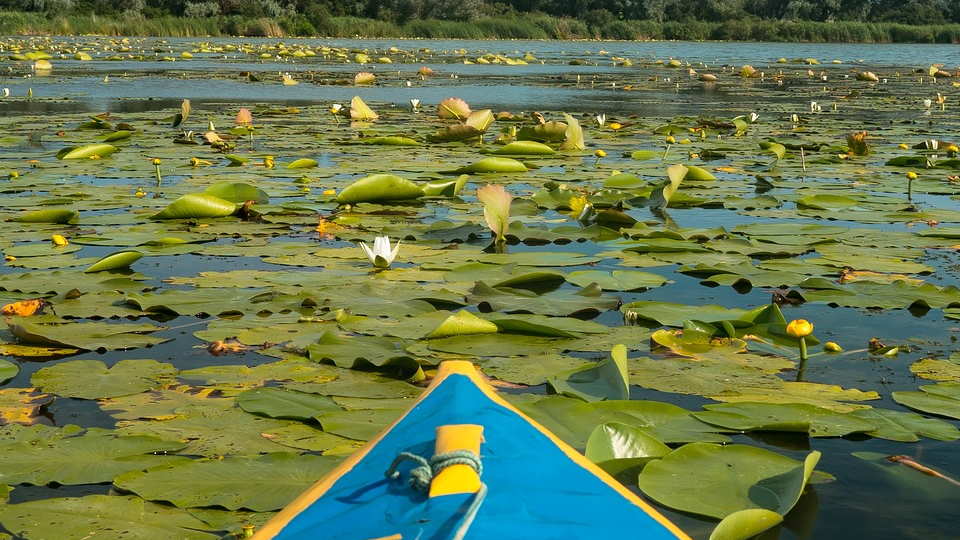For many people, kayaking is an exciting and adventurous activity. Whether you are kayaking on a river, at a lake or even in the ocean, it is important to follow kayaking etiquette to ensure a safe and enjoyable experience.
Here are some reasons why following kayaking etiquette is important for a safe and enjoyable experience:
- Promotes Safety: Kayaking involves risks, especially if you are paddling in unfamiliar waters or challenging conditions. By following kayaking etiquette, you can reduce the chances of accidents, collisions, or injuries. For example, by keeping to the right side of the waterway, you can avoid head-on collisions, and by using proper signals, you can communicate your intentions to other kayakers or boats. Additionally, by wearing a life jacket, you can enhance your safety in case of an accident.
- Respects the Environment: Kayaking takes you to some of the most beautiful and serene places on earth, such as rivers, lakes, and coastlines. However, the environment is fragile, and our actions can have a significant impact on it. By following kayaking etiquette, you can minimize your impact on the environment and preserve it for future generations. For example, by not littering, avoiding sensitive areas, and not disturbing wildlife, you can help maintain the natural beauty and diversity of the environment.
- Fosters Consideration for Others: Kayaking is a social activity that involves sharing the water with other kayakers, boaters, and wildlife. By following kayaking etiquette, you can show consideration for others and promote a friendly and harmonious atmosphere on the water. For example, by giving right of way to other kayakers or boats, not making excessive noise, and avoiding crowded areas, you can help create a positive experience for everyone.
Kayaking etiquette is not only about rules and regulations but also about common sense, respect, and responsibility. By following kayaking etiquette, you can enhance your safety, respect the environment, and show consideration for others, thereby ensuring a safe and enjoyable experience for everyone.
Respect the Environment
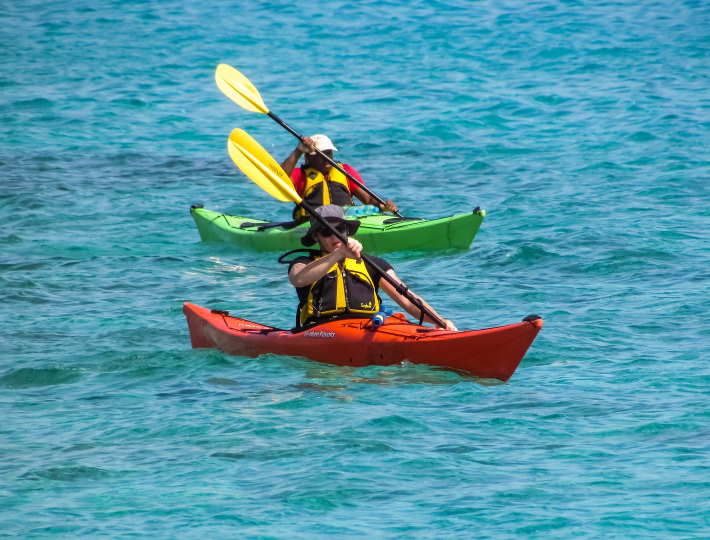
Kayaking is a great way to enjoy the beauty of nature and explore the wonders of the wildlife that inhabit it. However, kayakers must take responsibility for minimizing their impact on the natural surroundings. By respecting the environment, we can ensure the preservation of natural beauty for future generations. Here are some tips for minimizing your impact:
- Do not disturb wildlife – Avoid getting too close to animals such as birds, seals, and turtles. Disturbing them can cause them to abandon their habitat or abandon their young.
- Leave no trace – When you dismount from your kayak, take everything you brought with you, including any trash or debris. Do not leave anything behind.
- Use environmentally friendly products – When you purchase gear and accessories for your kayaking trip, choose products that are environmentally friendly. Avoid using plastic and opt for biodegradable alternatives like bamboo.
By following these tips, you can enjoy your kayaking experience while respecting the environment. By preserving the natural beauty of our surroundings, we can ensure that future generations can enjoy it as well. Remember – respect the environment, and you can make a difference!
Sharing the Water

When kayaking, it is important to remember that you are not the only one on the water. In order to have a safe and enjoyable experience, it is crucial to follow certain rules and regulations regarding sharing the water with others, including other kayakers, boaters, and wildlife.
The first rule of sharing the water is to always be aware of your surroundings. This means keeping an eye out for other individuals or groups who may be paddling nearby. It is essential to maintain a safe distance to prevent collisions or other accidents.
In addition to being aware of other kayakers, it is important to also respect the space of other boaters, including motorized and non-motorized vessels. When sharing the water with boaters, always stay to the right side of the channel and yield to larger boats that may have difficulty maneuvering around you.
- Also, be aware of wildlife and their habitats. Avoid disturbing any wildlife or their habitats. Refrain from getting too close to animals and be mindful of their habits and behavior. Paddle quietly and avoid sudden movements or loud noises.
Another important aspect of sharing the water is proper communication. Maintaining clear communication signals will ensure a safe and efficient paddling experience for all. Some of the most common signals used by kayakers include raising a paddle, pointing in the direction of travel, and waving a hand to signal a turn.
Finally, always respect the environment by practicing Leave No Trace principles. This means packing out all trash and avoiding disturbing any plants or wildlife. It is important to preserve the natural beauty of the waterways we enjoy.
Communicating on the Water
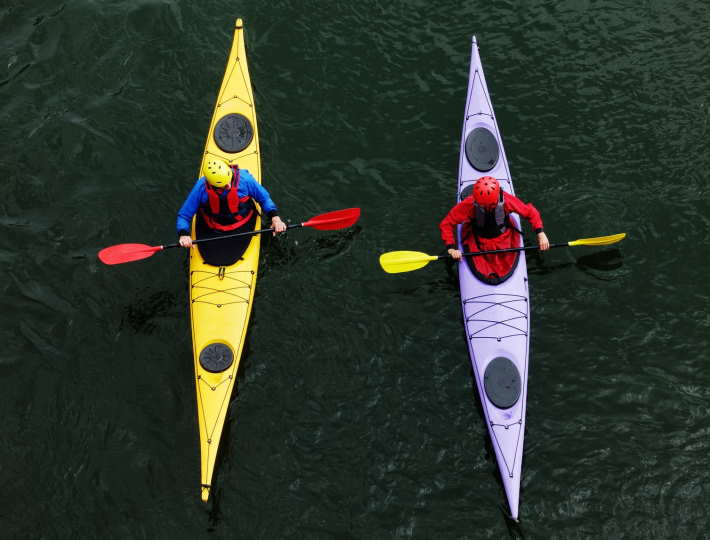
Kayaking is an exciting way to explore nature, but it’s important to follow proper etiquette while on the water to ensure the safety and enjoyment of all. One crucial aspect of kayaking etiquette is communication, which is essential for coordinating with other kayakers and avoiding accidents. Here are some tips for communicating effectively and safely while kayaking:
Signals and Gestures
When on the water, verbal communication can be difficult due to the sound of the waves, wind, and other factors. That’s why it’s crucial to know and use hand signals to communicate with other kayakers. Here are some common signals:
| Signal | Meaning |
|---|---|
| Pointing | Indicates direction of travel or object of interest |
| Raised Paddle | Signals to stop or pause |
| Horizontal Paddle | Signals to turn or change direction |
| Hand on Head | Signals for help or assistance |
These signals can be used with other gestures such as nods, waves, and thumbs up to convey additional information or emotion. For instance, a friendly wave can show appreciation or a thumbs up can indicate satisfaction with the journey.
Appropriate Volume
While communication is essential, it’s important to keep noise levels to a minimum. Loud noises and shouting can disrupt the tranquility of the surroundings and disturb wildlife. Additionally, keep in mind that sound travels further on water than on land, so even soft conversations can be heard by others on the water.
Respect and Courtesy
Like any other activity, kayaking requires respect for others and for the environment. When communicating with other kayakers, show common courtesy and respect for their abilities, preferences, and needs. For instance, if a kayaker appears to be lost or struggling, offer assistance. On the other hand, if a kayaker prefers to paddle alone or in a different direction, respect their choice.
Finally, always keep safety in mind when kayaking. Be aware of the weather, water conditions, and other potential hazards. If you need to communicate an emergency, use a whistle or other loud alert to get attention.
Navigating Narrow Passages
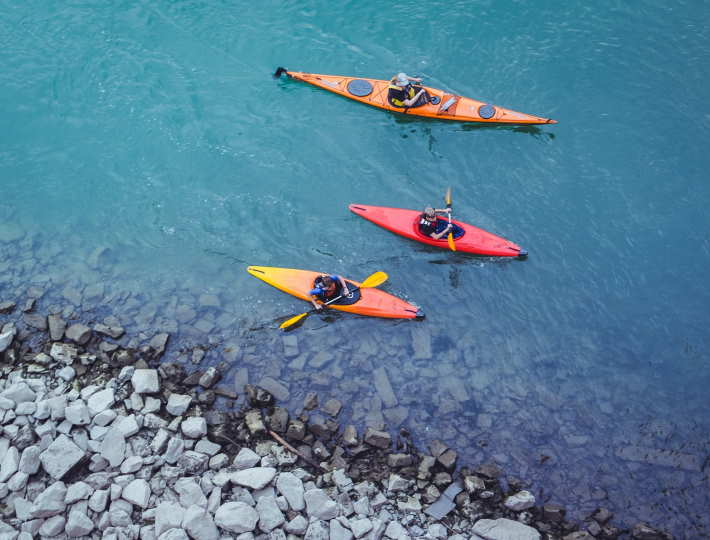
Kayaking is a fun and invigorating experience that allows you to connect with nature while getting a great workout. However, it’s important to respect certain rules and guidelines to ensure that everyone stays safe and has an enjoyable time on the water. When navigating narrow passages, it’s especially important to be aware of your surroundings and take precautions to avoid collisions. Here are some tips for safely navigating narrow passages in your kayak:
1. Slow down: When approaching a narrow passage, slow down and take your time. This will give you more control over your kayak and allow you to react quickly if necessary.
2. Keep to the right: In the US, the standard rule of navigation is to keep to the right. This means that when entering a narrow passage, you should stay to the right side and allow any oncoming traffic to pass on the left.
3. Keep a safe distance: It’s important to keep a safe distance between your kayak and any other boats or kayaks in the area. This will give you enough time to react if someone suddenly changes direction or stops unexpectedly.
4. Use hand signals: If you need to communicate with other kayakers or boaters in the area, use common hand signals such as pointing in the direction you intend to go or holding up your hand to signal a stop.
5. Be aware of currents and obstacles: When navigating narrow passages, it’s important to be aware of any obstacles such as rocks or fallen trees. You should also be aware of any currents that may be present and adjust your speed and direction accordingly.
6. Stay alert: Finally, it’s important to stay alert and aware of your surroundings at all times. Avoid distractions such as music or cell phones and keep your eyes and ears open for any potential hazards.
By following these tips, you can safely navigate narrow passages in your kayak and avoid collisions with other boats or kayaks in the area. Remember to always put safety first and have fun out on the water!
Launching and Landing
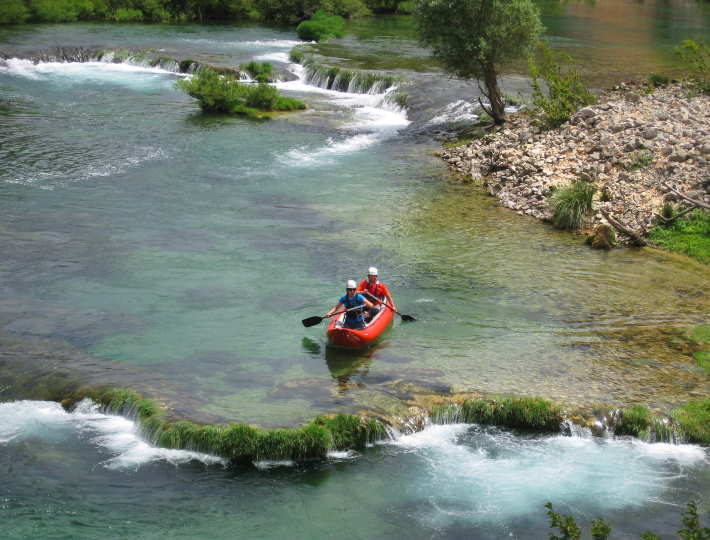
Tip 1: Be prepared
Before you arrive at the launch site, make sure you have all the necessary equipment for kayaking, including paddles, lifejackets, and any other safety gear required by your local laws. Ensure your kayak is secure, and the cargo is correctly fastened. After launching or landing, make sure that your kayak is strapped or otherwise secured on your vehicle before leaving the area.
Tip 2: Be patient and polite
When you arrive at the launch or landing site, be patient and wait in line for other kayakers to finish. If there are multiple lines, be sure to use the correct one. Always launch or land only one kayak at a time, and avoid cutting in front of someone else. When launching or landing, maintain a safe distance from other kayakers and boaters to avoid collisions or crashes. If there are other people waiting to launch, don’t spend too much time preparing your gear, as this will delay the queue.
Tip 3: Keep the area clean
When launching or landing, ensure that you’re not leaving any trash behind. Keep the area clean by packing out all your trash and properly disposing of it. Additionally, avoid using soap or other cleaning products in the water, as these can harm the natural environment.
Tip 4: Follow local rules and regulations
Many water bodies have specific rules and regulations that govern the use of boats, kayaks, and other watercraft. Make sure you’re aware of these rules and follow them at all times. For example, some areas may have speed limits or noise restrictions, while others may require you to wear a lifejacket while kayaking. Ensure that everyone in your group complies with these rules to avoid any unwanted confrontations.
Tip 5: Be courteous to others
Finally, be courteous to other kayakers, boaters, or beachgoers when launching or landing your kayak. Avoid making unnecessary noise or creating waves that can disrupt others enjoying nature. Respect the privacy of others and avoid crowding or disturbing them. Remember, everyone is out to have a stress-free and enjoyable experience, so be considerate of other’s needs and space.
By adhering to the above tips, you will have a stress-free and safe kayaking experience. Remember, everyone on the water must work together to ensure their safety and enjoyment. Follow the kayaking etiquette, and everyone on the water will have a good time.
Giving Right of Way
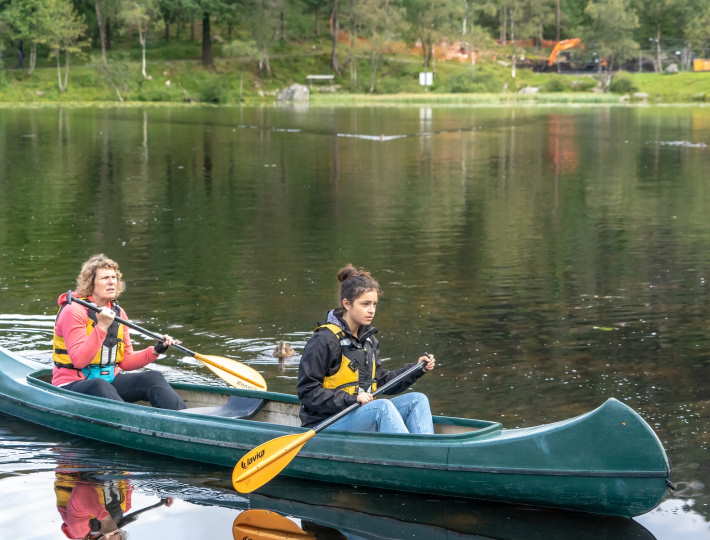
Kayaking is an enjoyable and peaceful outdoor activity that offers a great way to experience the natural world. However, to fully enjoy the experience, kayakers must understand and follow the rules of etiquette. One of the most important of these rules is giving right of way to other kayakers and boats. Here are some rules for giving right of way that can help make your kayaking experience safer and more enjoyable:
1. Keep to the right: When kayaking on a river, lake, or other waterway, always stay on the right side of the channel. This is the same rule that applies to driving on the road. This will help minimize the chances of collisions with other kayakers, boats, and other watercraft.
2. Yield to oncoming traffic: If you come across another kayak or boat coming towards you, yield the right of way to them. This means that you should stop or slow down to allow them to pass you. Only proceed after the other vessel has passed you completely and it is safe to do so. Avoid making sudden or unpredictable movements that could cause a collision.
3. Yield to the vessel on your right: If you are approaching a kayak or boat on your right side, you must yield to them. Allow them to pass you first before continuing on your kayaking route.
4. Avoid crowded areas: If you can, try to avoid crowded areas where there are many other kayakers or boats. This will help reduce the chances of collisions and make for a more enjoyable kayaking experience. If you do find yourself in a crowded area, be extra cautious and follow the right of way rules carefully.
5. Be alert and aware: Always keep your eyes and ears open for other kayakers and boats. Listen for the sounds of other watercraft and watch for their movements. Avoid using your phone or other electronic devices while kayaking as this can distract you and make it harder to maintain situational awareness.
By following these simple rules for giving right of way, you can make your kayaking experience safer and more enjoyable. Always remember to be courteous, respectful, and considerate of other kayakers and boats. With a little practice and attention, you can become a skilled and confident kayaker while keeping yourself and others safe on the water.
Avoiding Crowds
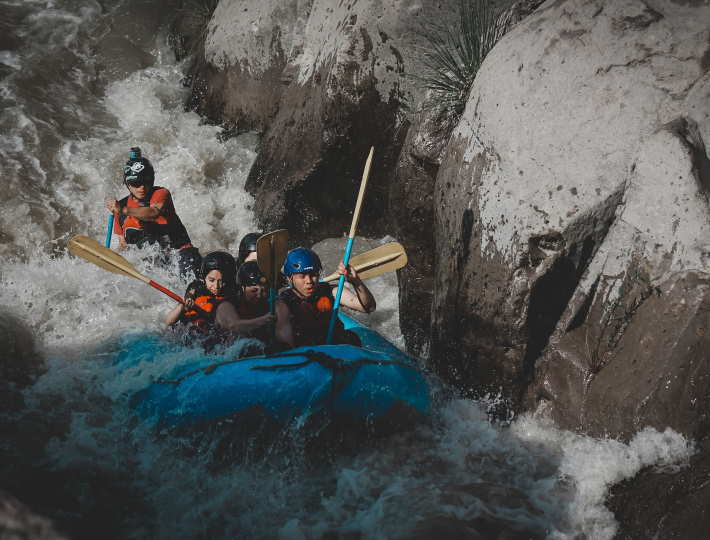
When you’re out on the water kayaking, the last thing you want is to feel crowded and overwhelmed. Not only can it be frustrating, but it can also be dangerous if there are too many kayakers in a small space. That’s why it’s important to know some tips for avoiding crowds and respecting the privacy of others while kayaking.
1. Choose the right time and place.
One of the easiest ways to avoid crowds while kayaking is to choose the right time and place to go. Try to go early in the morning or later in the evening when there are fewer people around. You can also try going to less popular spots or going on a weekday when most people are working. Planning ahead and doing research can help you find the best places and times to avoid crowds.
2. Keep your distance.
When you come across other kayakers or boaters on the water, it’s important to keep your distance and respect their privacy. Try to stay at least 100 feet away from other kayakers, or more if it’s a crowded area. Not only does this give them space, but it also helps prevent collisions and makes everyone feel more comfortable.
3. Don’t be too noisy.
While it’s natural to talk and laugh with your kayaking companions, it’s important to remember that noise can carry across the water and disturb other people nearby. Try to keep your voices down and avoid playing loud music or making unnecessary noise. This helps preserve the natural environment and also makes it more enjoyable for everyone around.
| Tips for Avoiding Crowds While Kayaking |
|---|
| Choose the right time and place |
| Keep your distance |
| Don’t be too noisy |
By following these tips and practicing good kayaking etiquette, you can help create a safe and enjoyable experience for everyone on the water. Not only will you avoid crowds and respect the privacy of others, but you’ll also be helping to preserve the natural environment and protect the wildlife that calls it home.
Safety First

Kayaking is an excellent way to enjoy nature and the great outdoors. However, it is important to remember that safety should always come first when it comes to kayaking. No matter how experienced you are, there are always risks involved in any water sport. By following kayaking etiquette and taking necessary precautions, you can ensure a safe and enjoyable experience.
One of the most critical aspects of kayaking safety is always wearing a personal flotation device (PFD). Even if you are a strong swimmer, you never know what could happen in the water. A PFD can be a lifesaver in unexpected situations, such as if your kayak capsizes, or if you get caught in a strong current.
Another key factor in kayaking safety is being aware of the weather conditions before setting out on the water. Check the forecast in advance, and if there are any potential hazards, such as high winds or lightning, it is best to postpone your trip. Always err on the side of caution rather than risking your safety.
- Wear a personal flotation device (PFD) at all times
- Check the weather forecast before kayaking
If you do find yourself in an emergency situation, there are several essential safety tips to keep in mind. First, try to stay calm and assess the situation. If you are still in your kayak, try to stay in it, as it will provide some level of safety and buoyancy. If you do capsize, try to keep your head above water, and swim or float to the shore if possible.
Knowing how to handle your kayak in different situations can also be crucial in avoiding accidents. Make sure you are familiar with basic kayaking techniques, such as how to paddle effectively, how to steer your kayak, and how to navigate different types of water terrain. Practicing these skills beforehand can help you feel more confident and secure when you’re out on the water.
Conclusion
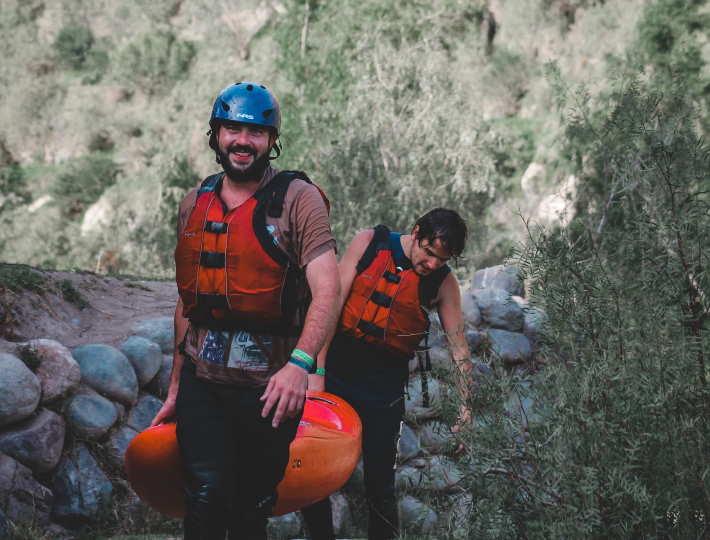
When it comes to kayaking, it’s important to remember that you are not just out there for yourself. There are other kayakers, boaters, and wildlife that share the water with you. This is where kayaking etiquette comes into play. By following these unwritten rules, you can ensure a safe and enjoyable experience for everyone involved.
One of the most important aspects of kayaking etiquette is respecting the environment. This means not disturbing natural habitats, picking up any trash you may find, and avoiding any activities that can harm the wildlife. Additionally, sharing the water with other kayakers and boaters requires proper communication and understanding of right of way rules.
Launching and landing your kayak can also be a delicate process, especially at busier boat ramps or beaches. It’s crucial to be patient and respectful of others in these situations. In addition to common courtesy, safety should always be the top priority while out kayaking. This means wearing a life jacket, checking the weather and water conditions, and having a plan in case of emergencies.
| Etiquette Tips | Importance |
|---|---|
| Respect the Environment | Minimizing impact on natural surroundings and wildlife |
| Sharing the Water | Proper communication and understanding of right of way rules |
| Launching and Landing | Patience and respect for others, especially in busy areas |
| Safety First | Wearing a life jacket, checking weather and water conditions, having a plan for emergencies |
Overall, kayaking etiquette is crucial for a safe and enjoyable experience on the water. Whether you’re a beginner or an experienced kayaker, it’s important to understand and follow these guidelines. By being respectful of the environment, communicating with others, and prioritizing safety, you can make the most of your time kayaking and ensure that others can do the same.

